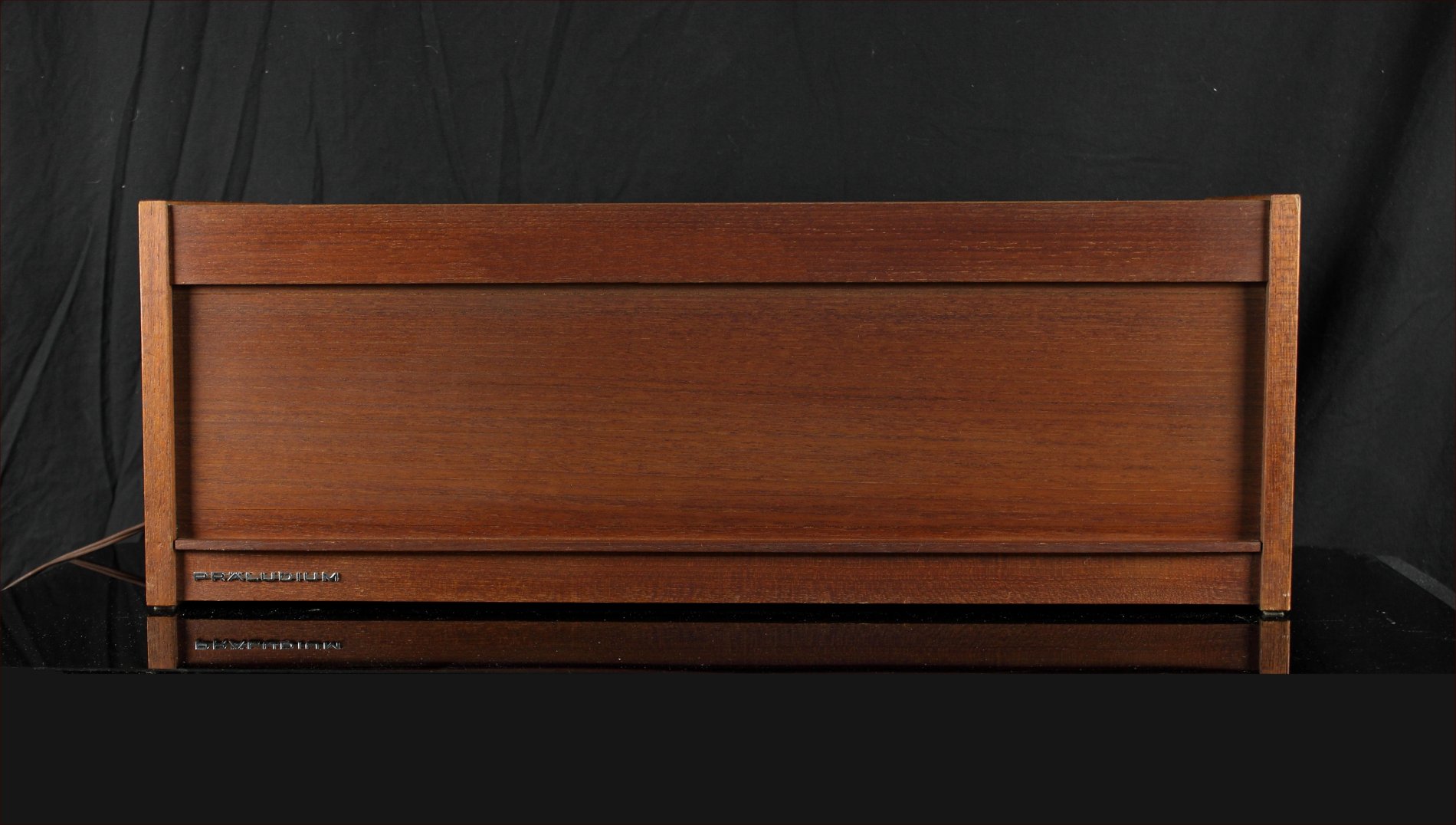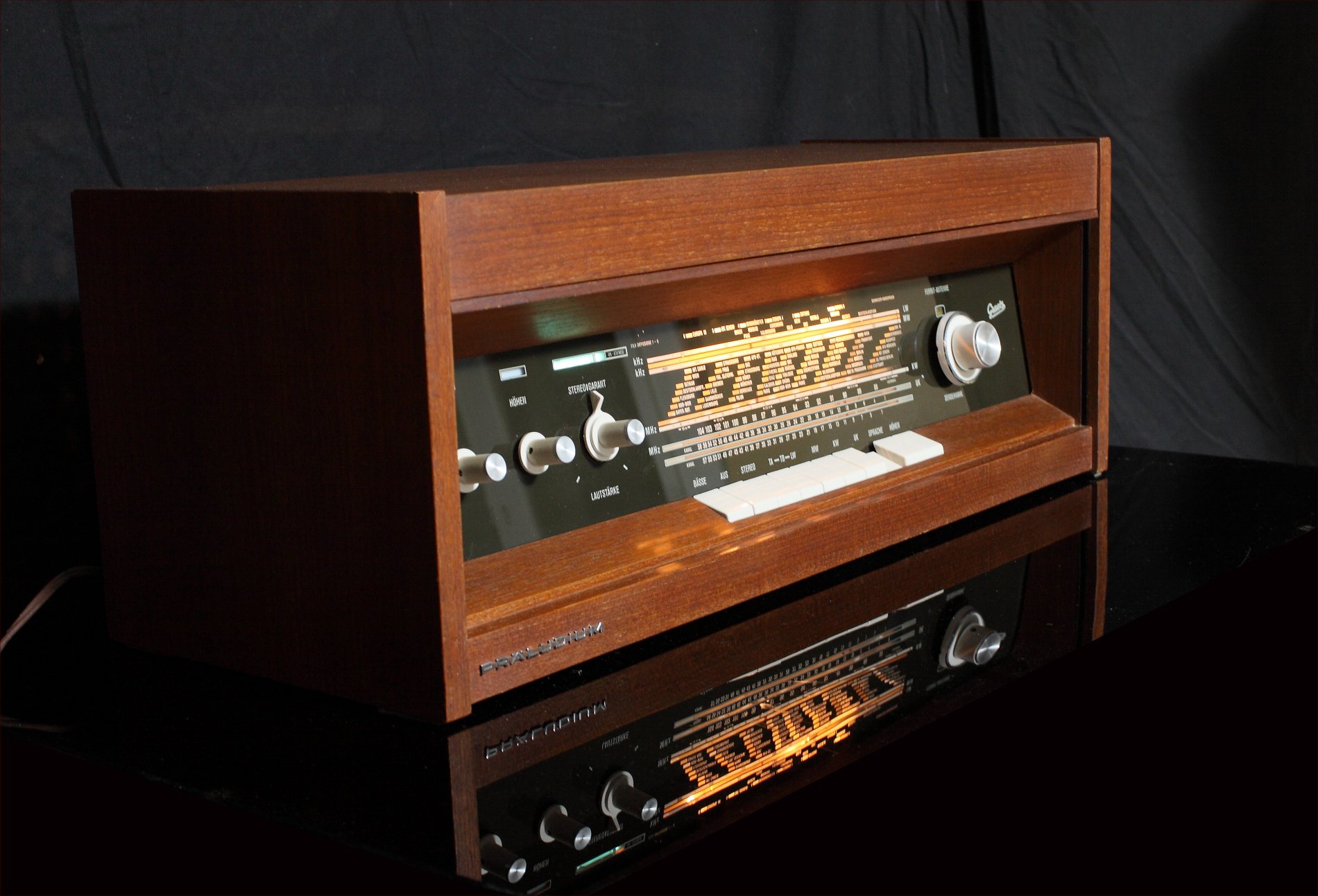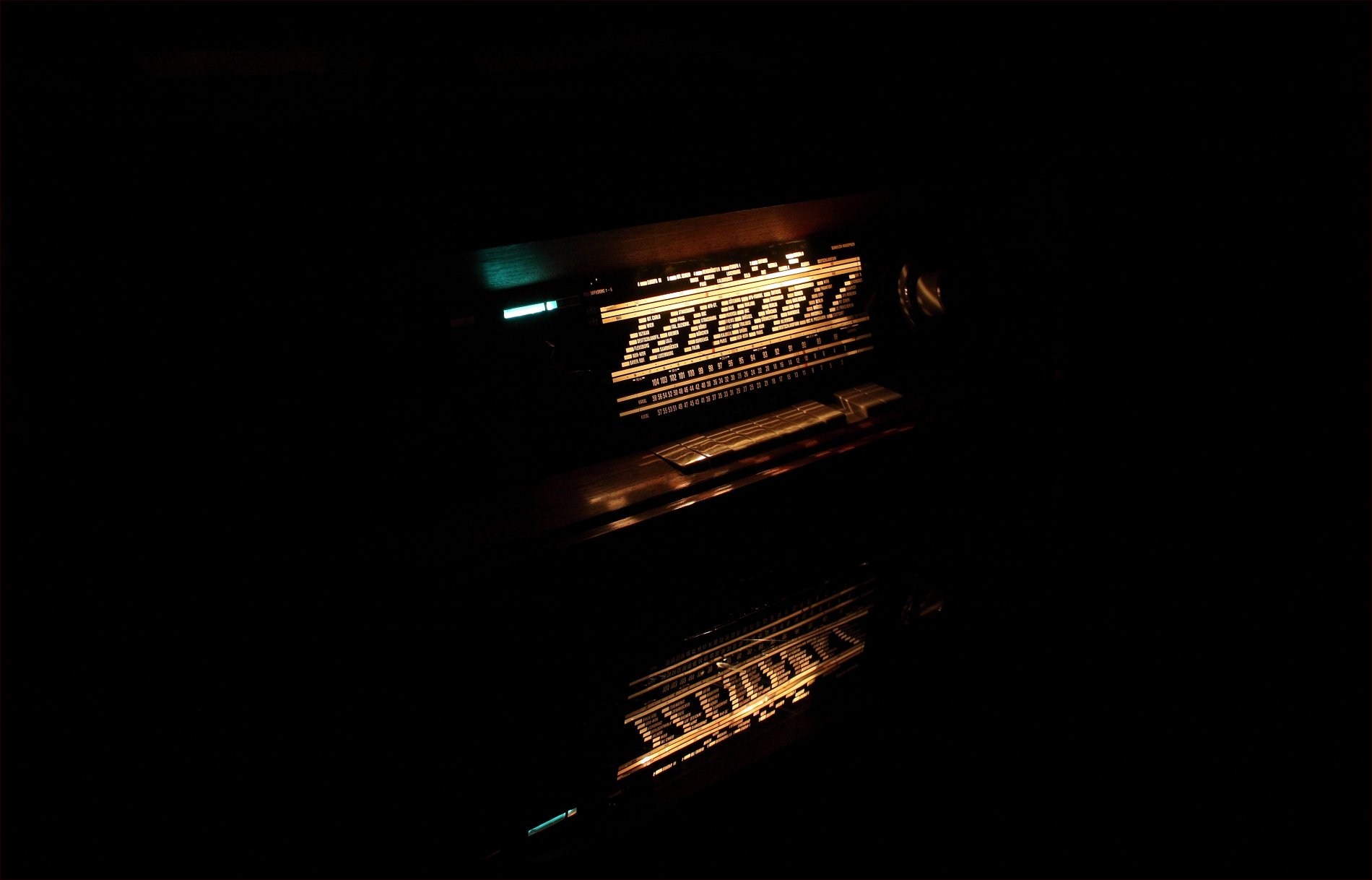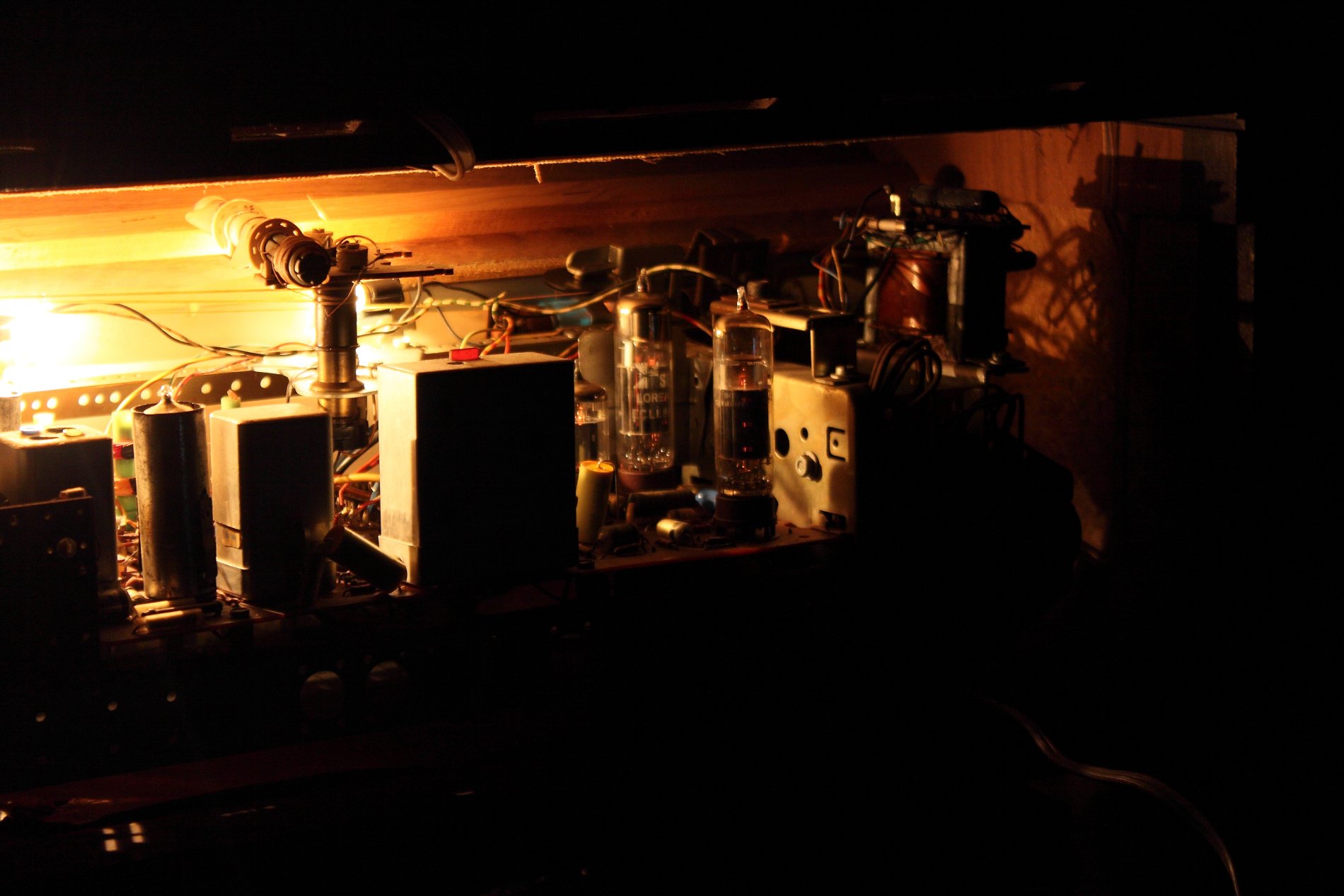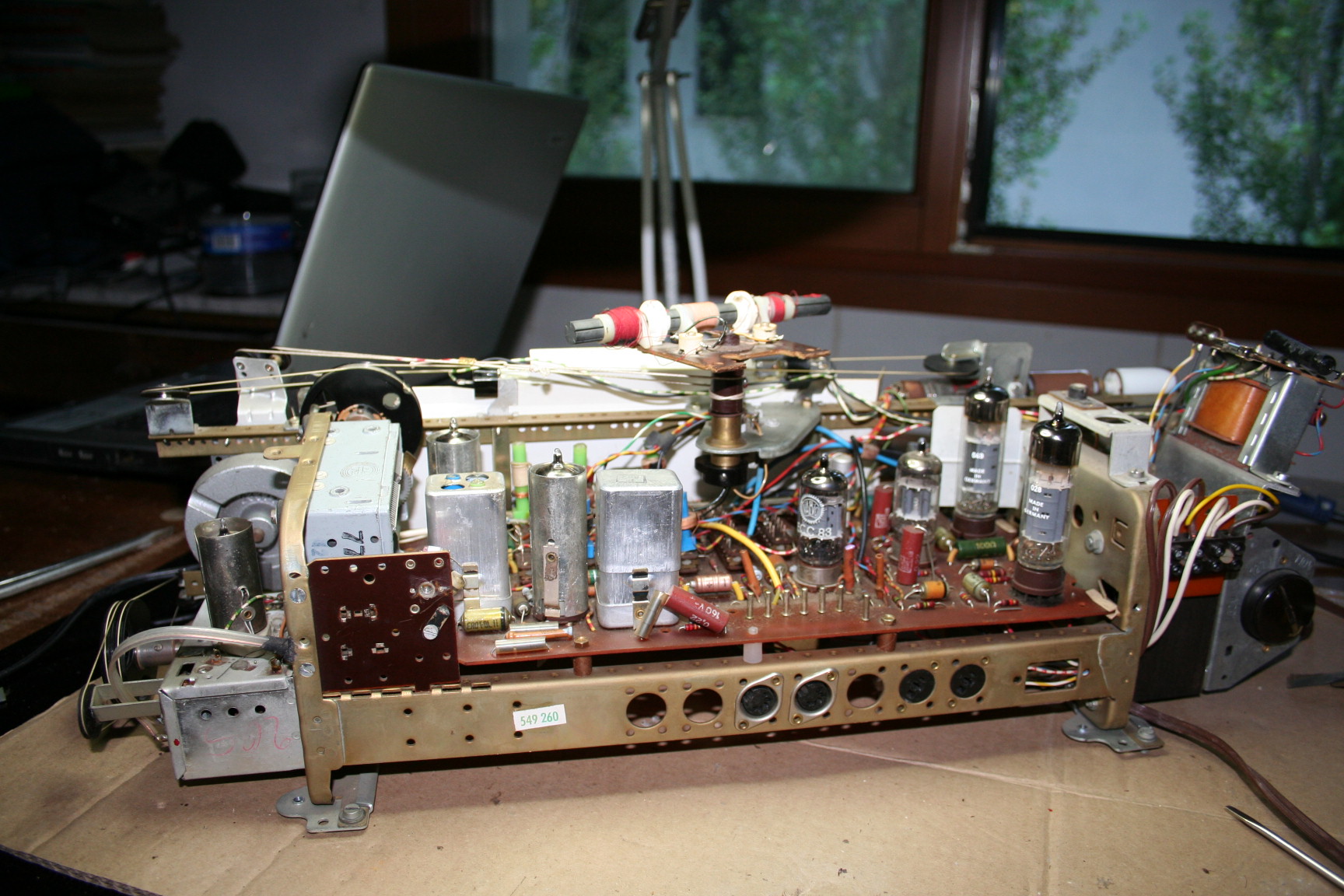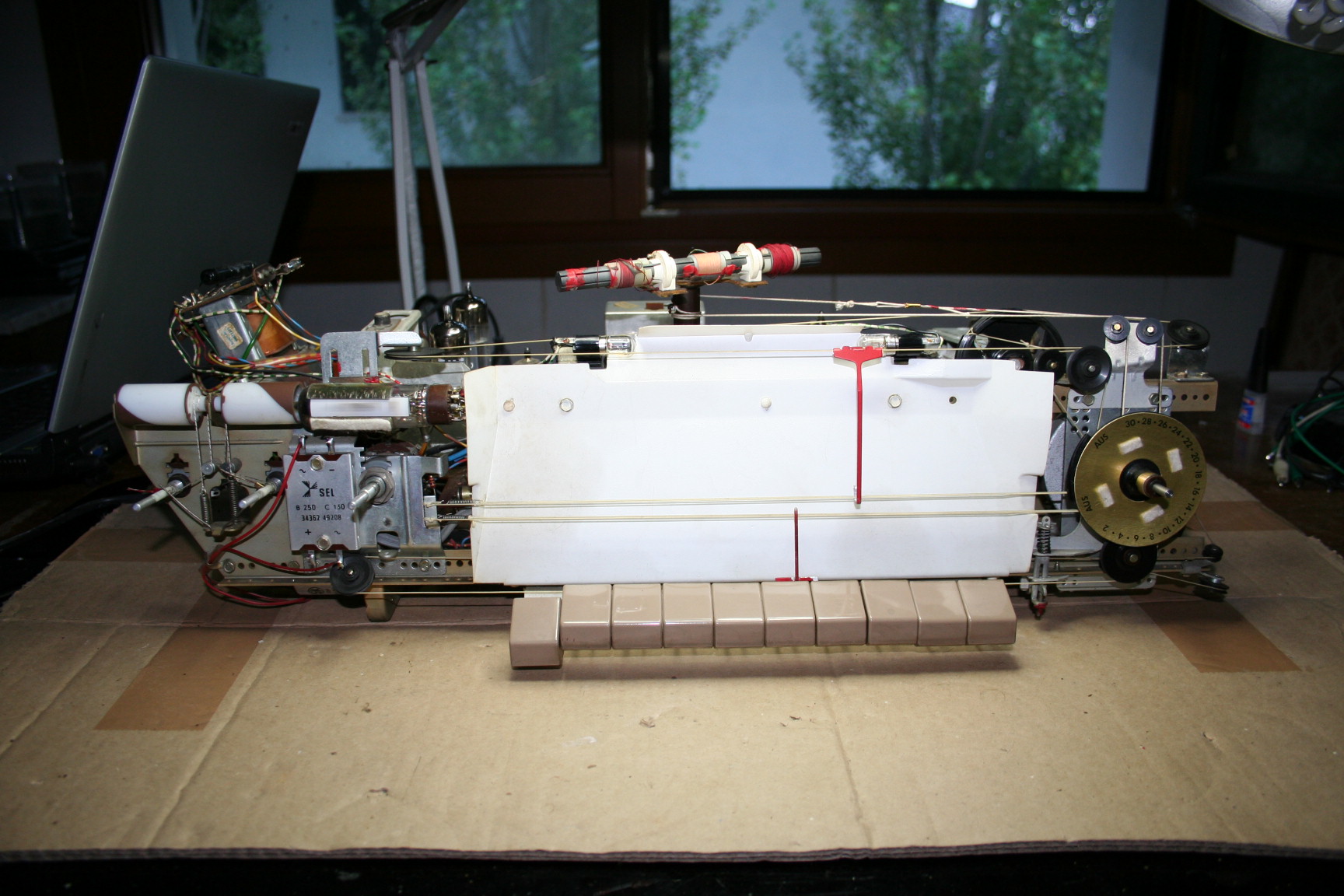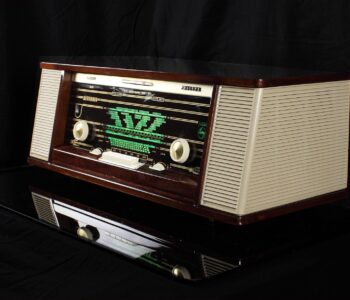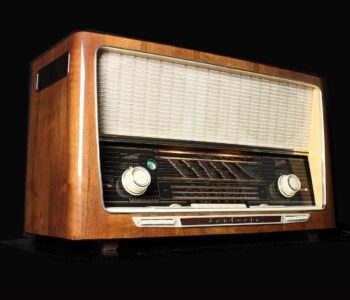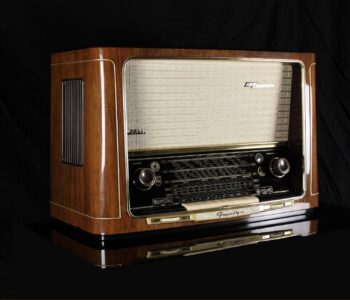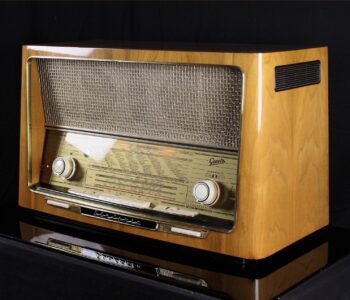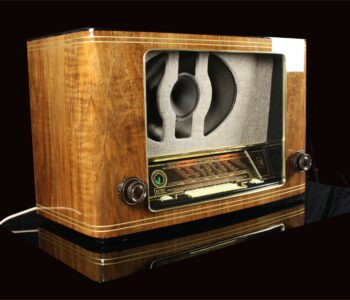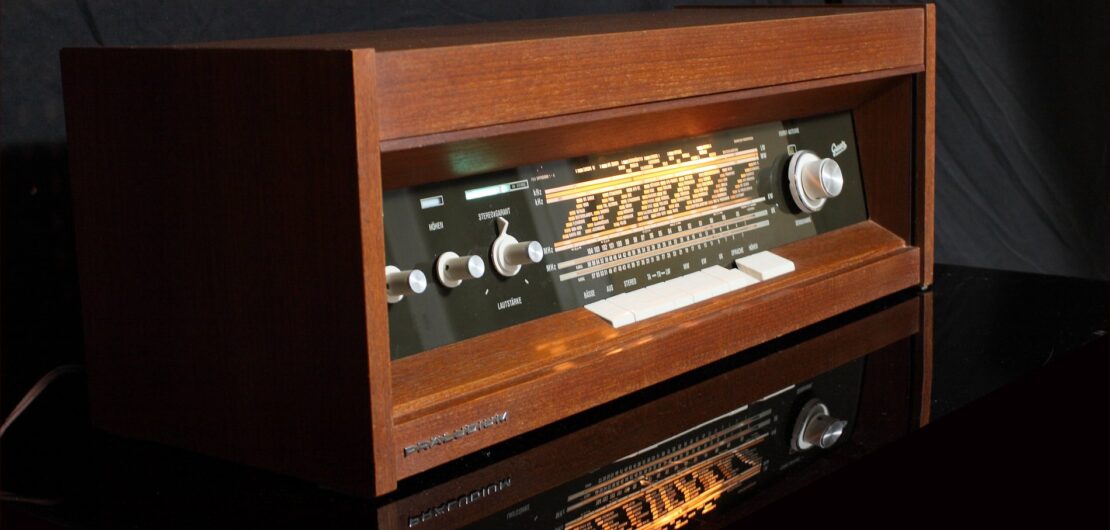 german radios - en
german radios - en
Graetz Präludium 23F – en
- by giovanni
GRAETZ Präludium 23F
From the Second World War until the 1960s, Graetz was considered one of the most prestigious radio manufacturers, although it never achieved high sales performances due to the high cost and economic conditions of Europe at that time.
Graetz devices have always been appreciated both for their elegant and refined finish but above all, for the constant search for innovative acoustic solutions and the related patents.
The Graetz Präludium 23F was the most prestigious stereo receiver produced by Graetz from 1966 to 1968.
It is the last tube receiver produced by Graetz. It therefore benefited from all the know-how on tube amplifiers developed by the Berlin company since 1932.
In that period every important manufacturer, German or Japanese, offered a model of receiver, "Receiver" in German. Telefunken produced the two models Opus 2430 and 2550, Nordmende produced the Steuergerät 3004 Stereo, Grundig the Stereomeister series, 300, 3000, 15.
With this device, Graetz entered the delicate sector of "High Fidelity" devices as conceived in that period.
The tuner section is equipped with a multiplexer so that stations that broadcast in stereo are received in stereo, a real gem for the time.
The FM converter is equipped with AFC (Automatic Frequency Control) so that when you tune in close to an FM station the Praludium automatically centers itself at the point of maximum emission making listening pleasant and free from disturbances, as far as the reception conditions allow.
The low frequency stage is classic but with some interesting details. The Volume potentiometer for example is equipped with three sockets for a more progressive variation of the Loudness correction level, thus avoiding the annoying variation of the response curve as the Volume of the device increases, typical of simpler devices equipped with only one or in the best of cases two sockets on the potentiometer.
The feedback circuit and tone control are much simplified compared to the previous configurations used by Graetz designers. The feedback level remains low, ensuring a natural and stable sound.
The controls are very soft, simple and intuitive to operate.
The acoustic tests and recordings that we normally publish for each device on the Compilation page were not carried out because the result would depend mostly on the speakers chosen and not so much on the device itself.
-
BLUETOOTH
Bluetooth receiver embed
-
MULTI PLATFORM CONNECTION
Each radio is equipped with a cable for connection to any digital device.
ELABORAZIONI TUBESOUND
– Bluetooth receiver embed – The unit is equipped with a BLUETOOTH receiver powered directly by the receiver power supply. This makes it possible to control the amplifier from any external digital device as an IPAD, a Smartphone, or a sophisticated multimedia station. So you can hear your preferred web station or your lossesless file without cables on the room. Wireless Receiver can be equipped upon requests.
– Multi Platform Connection – A customized adaptation cable to connect any digital device as Iphone, Smartphone, Laptop, CD Player etc. will be provided with this radio. This special cable suits the different impedances between the modern equipment and the receiver. Furthermore the two stereo channels flow into one without increasing the load to the input unit.


HISTORY
The Ehrich & Graetz metalworks was a factory established in 1866 in Berlin by Albert Graetz (1831–1901) and the tradesman Emil Ehrich (died 1887) under the name “Lampen-Fabrik Ehrich & Graetz OHG” (E&G).
By 1897 the firm was controlled by Albert’s sons, Max Graetz, and Adolf Graetz. The company grew rapidly, and in 1899 a factory complex were built in Berlin, in the United States, France, the UK, and Bombay.
Around 1910-1916 Max Graetz developed the famous Petromax Lantern. Around 1925 the factory also produced radios, and other electrical appliances under the name Graetzor.
In the Second World War, just as in the First World War, the company was part of the war industry. With the use of forced laborers from France, Russia, and the Netherlands the company made huge gains in production.
At the end of April 1945 the factory was claimed by the Russian army.
In 1949 the firm became part of the “peoples” program, “VEB-VolksEigenerBetrieb” and since 1950 “VEB Fernmeldewerk, Berlin Treptow (RFFT).” VolksEigenerBetrieb, means that the factory was owned by the people for the people (Communism).
In 1948 Erich, and Fritz Graetz founded a new company in Altena, Germany known by the name The Graetz Firm, which was successor to the lost family company in Berlin. The new company produced mainly radios, and televisions.
In 1961 the company was then sold to Standard Elektrik Lorenz (SEL) AG, but since 1987 has been to the present owned by the Finnish company Nokia.
MAIN FEATURES
Year of production: 1966/68
Superheterodyne IF 468/10700
6 AM Circuits 10 FM Circuits
Wavebands: Medium Waves (OM), Long Waves (OL),Short waves (OC), FM (UKW) 88-104 MHz
Loudspeakers: external
Dimensions (LHD): 650 x 240 x 250 mm / 25.6 x 9.4 x 9.8 inch
Net weight: 8 kg / 17.621 lb
8 tubes (Equiv: 17) : ECC85, ECH81, EBF89, ECC83, EMM803, ECC83, 2xECLL800
Rotating ferrite antenna for AM bands
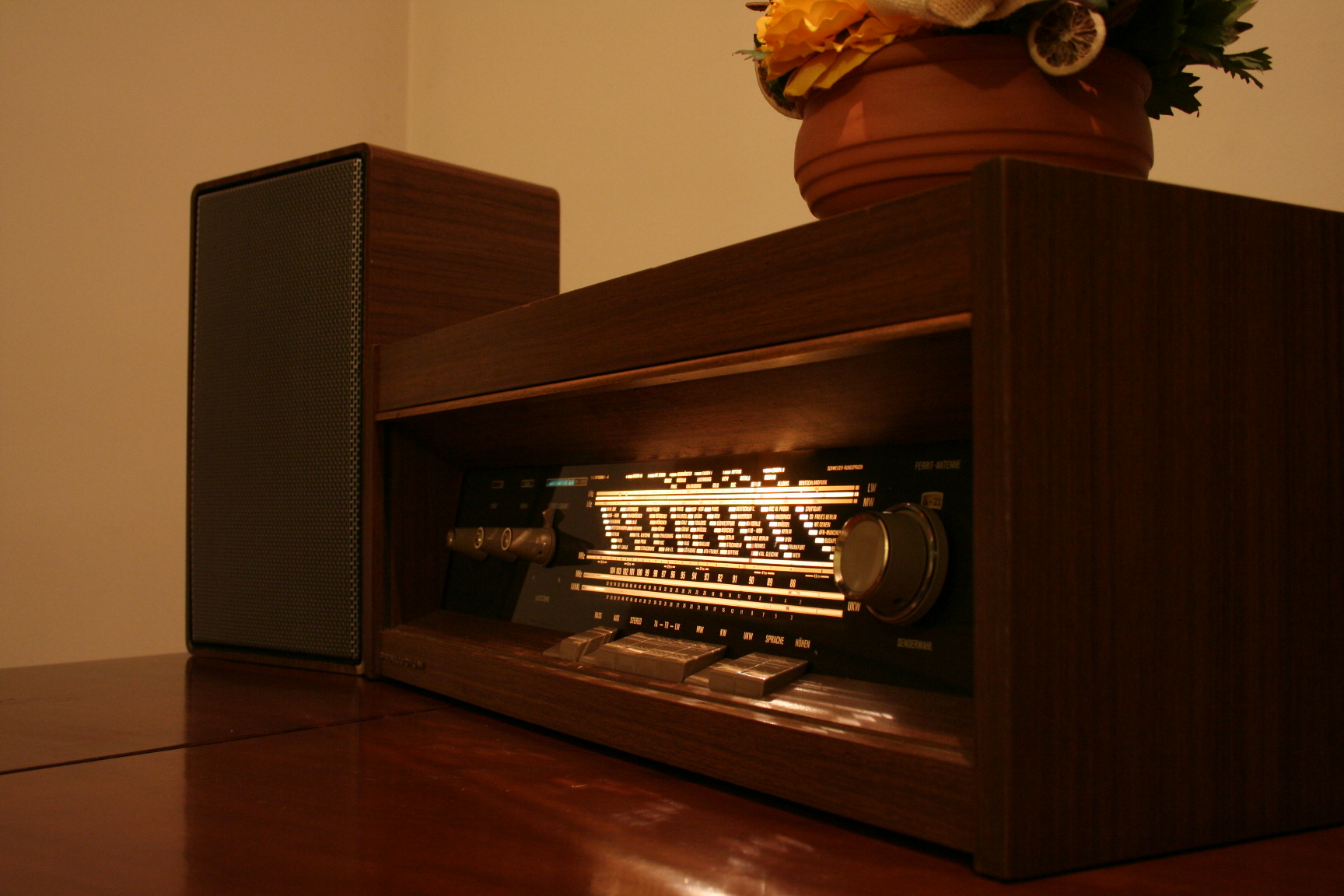
LOUDSPEAKERS
As previously mentioned, the speakers are external.
So you can connect the speakers based on your preferences, the space available and your wallet.
High sensitivity speakers are recommended, even those suitable for supporting low power.
Excellent results, according to my ear, were achieved with a speaker with a Fostex FE208NS horn-loaded motor. But the topic of speakers is enormously vast, indeed, infinite, and we cannot address it here.
TONE CONTROL WITH LEVEL INDICATION
The tone control system is very efficient. Above the large tone control knobs we find a band that lights up progressively indicating the emphasis given to the band on which it acts.
The control is very simple:
Bass - Bass
Hohen - Treble
Bass button - Emphasizes the low tones
Sprache button - Attenuates the low and high tones, enhancing the voice, useful in spoken transmissions
Hohen button - Emphasizes the high tones

ANTENNA ORIENTATION
Rotating ferrite antenna with window indicating its position.
The ferrite antenna is rotated with the large knob behind the volume knob,
Inside the cabinet there is a dipole for FM reception and an adjustable ferrite antenna for AM reception.
The reception sensitivity with the internal antennas is very good.
SEPARATE TUNING CONTROL BETWEEN AM AND FM
The tuning system is another gem.
The unit is equipped with separate tuning mechanisms for the AM bands and for each of the two FM bands.
There is only one tuning knob but a selector switches on separate cable systems (all steel) and pulleys depending on the band.
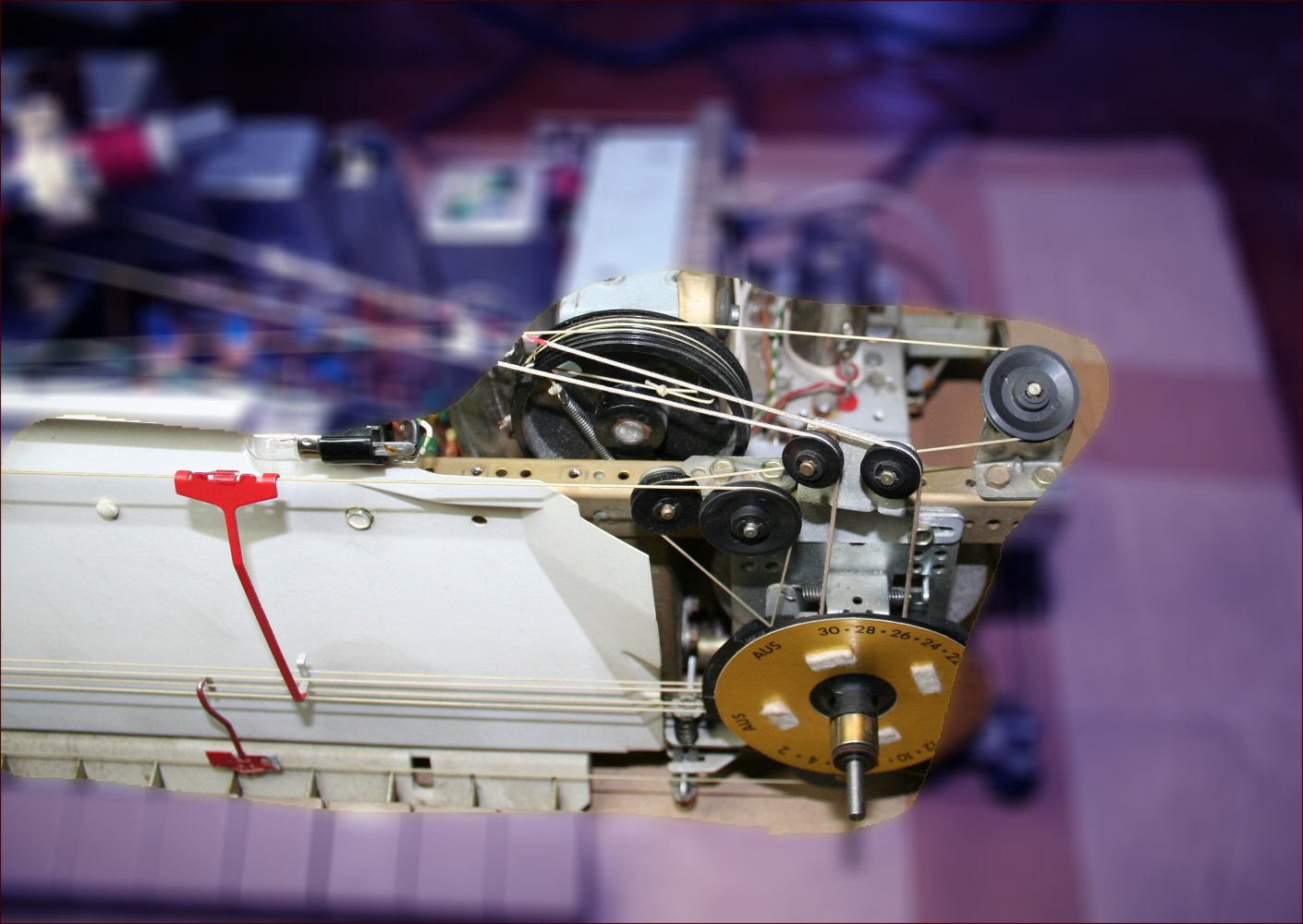

TUNING INDICATOR
The magic eye has obviously been replaced.
1 - Bass control
2 - Treble control
3 - Volume control with built-in Loudness
4 - Left and right channel balance control
5 - Bass boost button
6 - Power off button (OFF)
7 - Stereo/Mono
8 - Turntable (if pressed together with LW enables Recorder Input)
9 - Long Waves (if pressed together with TA enables Recorder Input)
10 - Medium Waves
11 - Short Waves
12 - FM
13 - Bass and treble reduction button
14 - Bass reinforcement button
15 - AM/FM tuning
16 - Ferrite antenna position adjustment for Medium and Long Waves)
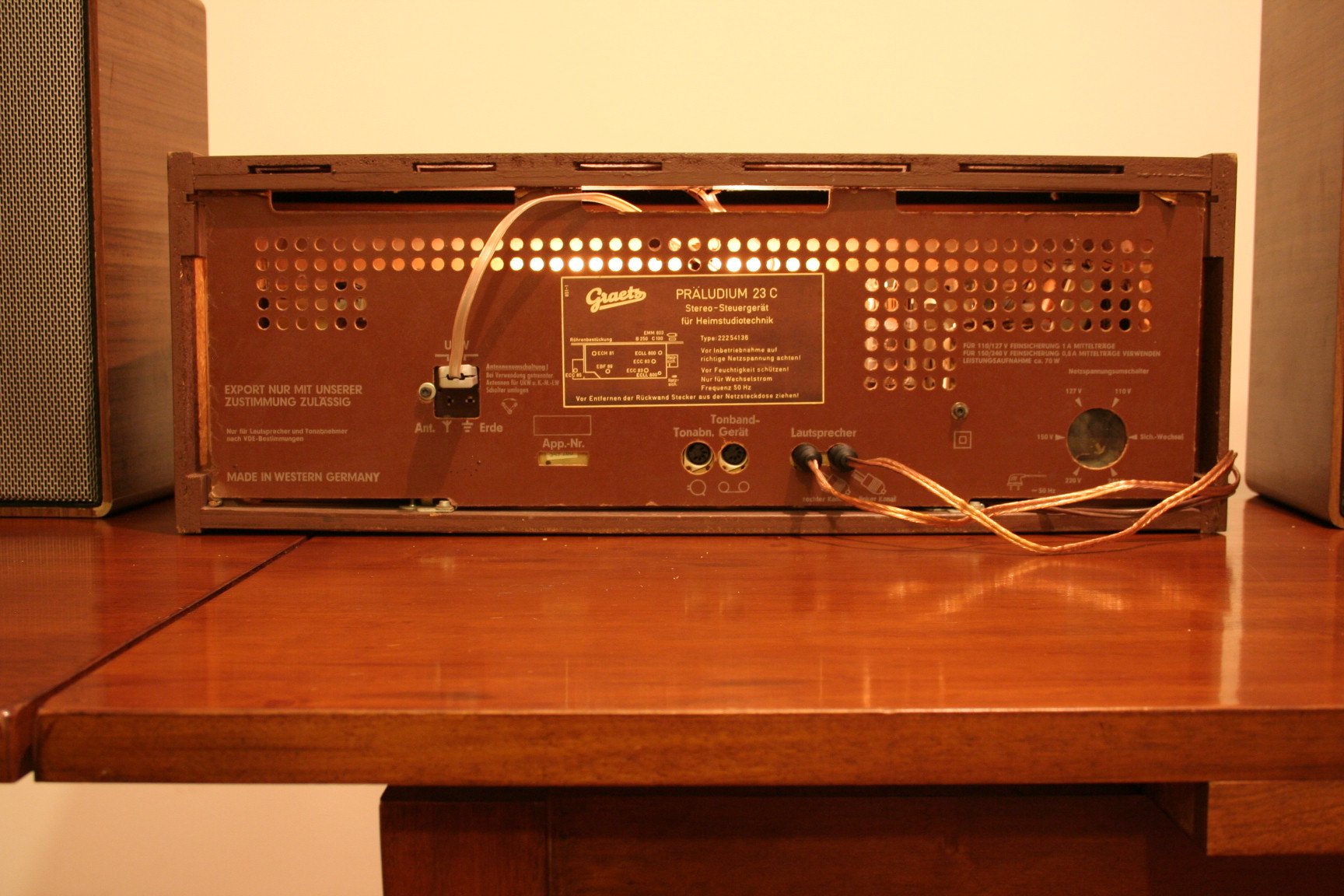
REAR SIDE
External speaker output.
Recorder socket (tonbandgerat).
Turntable input (tonabnehmer)
AM and FM antenna inputs and ground socket.



